Take a look through the electronic eyepiece on the side of the Unistellar eVscope 2 ‘smart’ digital telescope and you will notice a major upgrade from the original eVscope.
The new Nikon-made eyepiece on the eVscope 2 creates real-time views of deep-sky objects that are both blacker and more colourful than before.
A new eyepiece isn’t all that has changed in the second version of Unistellar’s flagship telescope.
- Buy now from Jessops
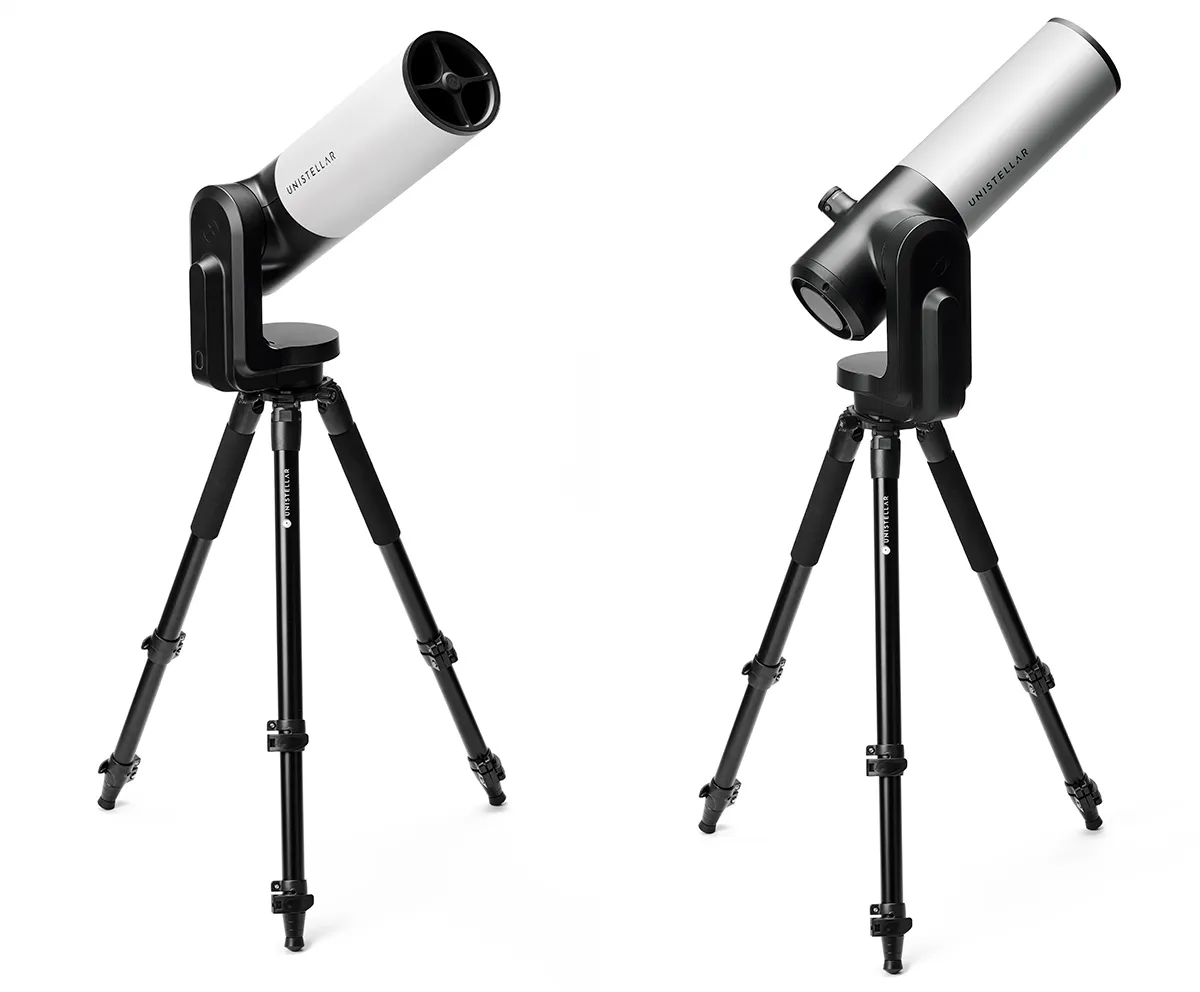
The eVscope 2 is fitted with a new Sony camera sensor and continually tracks-and-stacks images in real-time to produce colourful views of deep-sky objects, both at the eyepiece and via an app.
Another notable improvement is the eVscope 2’s wider field of view, which has been increased from 30 arcminutes to 34 arcminutes.
This means that it is now possible to see more of large objects, such as the Andromeda Galaxy, M31, and, crucially, the Moon.
The eVscope 2 is at its best under a dark sky; take it away to dark rural skies (something you can easily do using its excellent backpack) and it’s possible to take images of objects as faint as 18th magnitude.
However, if you use it in the centre of a city, it can still see down to around 16th magnitude without the need for any filters.
Like its stablemates, the original eVscope and the eyepiece-less eVscope eQuinox, the eVscope 2 works differently to the average telescope.
A 4.5-inch reflector telescope with a motorised altazimuth mount, it flirts so heavily with Nikon and Sony that it’s as much a basic astrophotography rig as a telescope.

That eyepiece and sensor aside, the eVscope 2 is simple to set up, by lifting the all-in-one tube and motor (with the computer and battery) onto a hefty tripod, which is fitted with a spirit level.
Once it is in position, all the user needs to do is switch it on, attach a phone or tablet to its Wi-Fi network and begin a short set-up process.
A press of a button on the Unistellar app engages the ‘Automatic Field Detection’ mode to calibrate its database.
It’s also sometimes necessary to collimate or focus the eVscope 2 by using the Bahtinov mask hidden in its dust cap.
Unistellar's YouTube videos are very helpful in this respect.
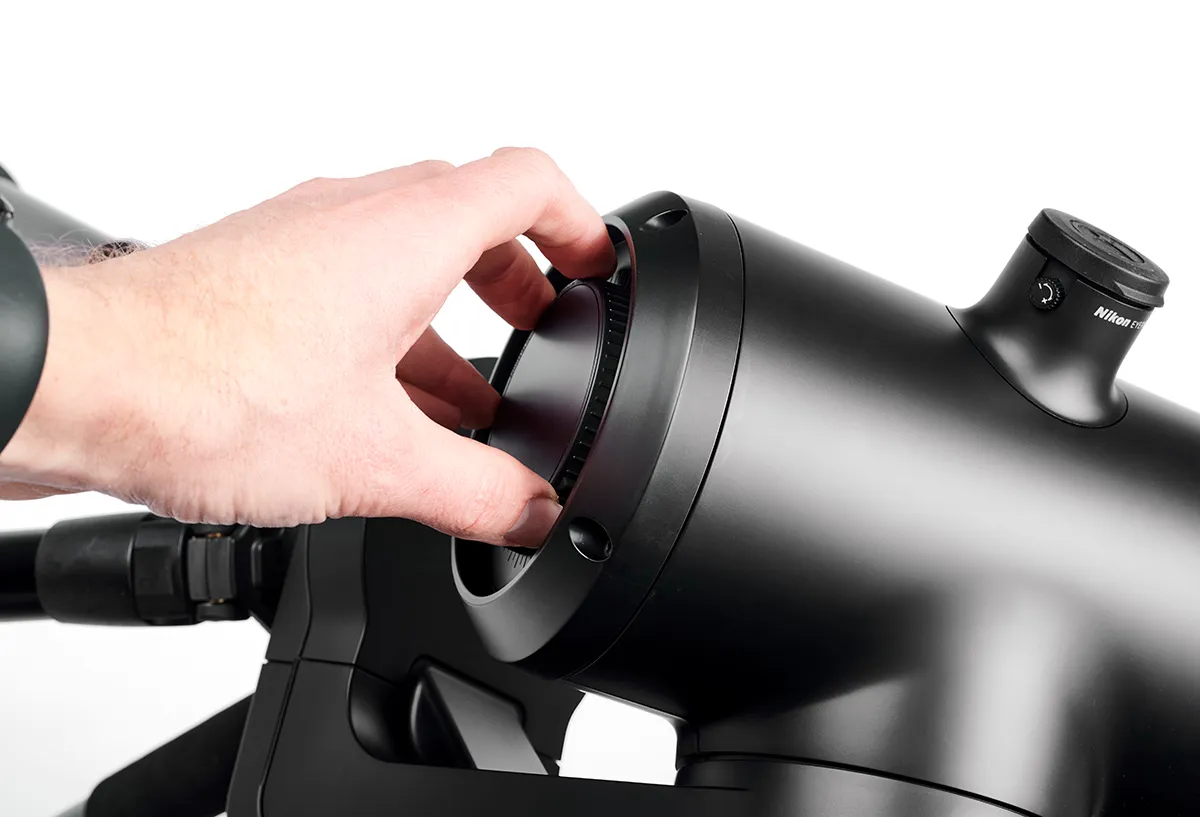
Once set-up is complete, it's possible to slew to objects that the Unistellar app recommends.
The app is excellent, with plenty of advice on what targets are about to set or rise, or the targets that are in a prime position for observing.
With a target in its crosshairs the app then invites the user to engage ‘Enhanced Vision’ mode.
This is where the eVscope 2 does its best work, with its computer imaging an object every four seconds and stacking the results.
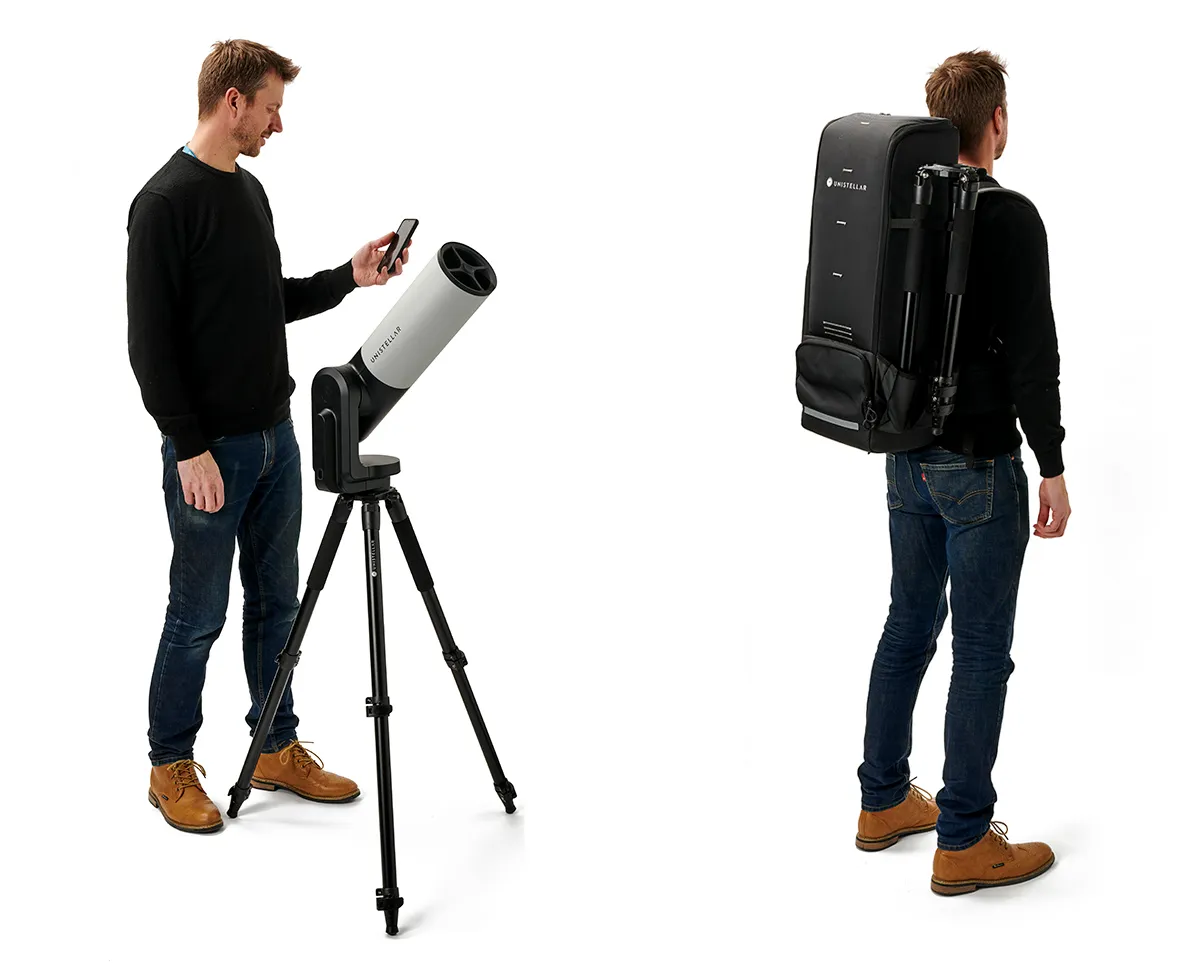
The longer you let the eVscope 2 image a target, you will be able to see the resulting astrophoto visibly refresh, align and improve.
Its 7.7MP images are then visible to anyone close by with the Unistellar app open on a smartphone or tablet.
You can also export them as PNG files and share them easily on social media.
As it stands at the moment, you can’t easily access the RAW image files because the process involves uploading to Unistellar’s servers.
Can the eVscope 2 take good images?
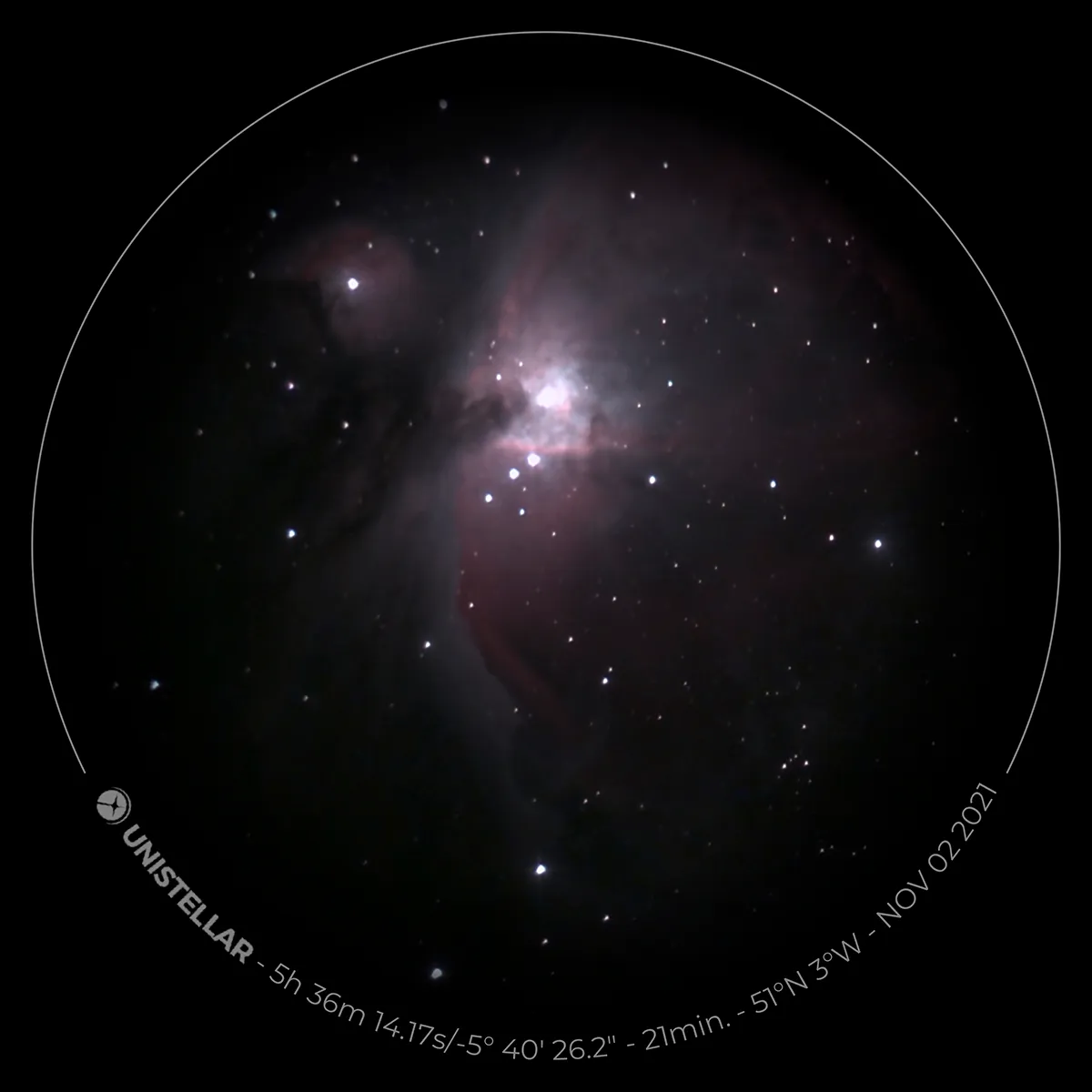
So, how do the photos measure up, and are they any good? The answer is yes, but you’re not likely to win any astrophotography competitions with them.
Best seen as an effective way to do and to share astronomy from anywhere – and particularly when under light pollution – the eVscope 2’s new sensor produces images that appear to have more detail, contrast and colour vibrancy than on previous models.
The transparency of the sky makes a huge difference too, but over several clear nights of observing we were able to get fabulously colourful images of the Orion Nebula, M42, watching in awe as each new image was intelligently aligned to reveal more detail.
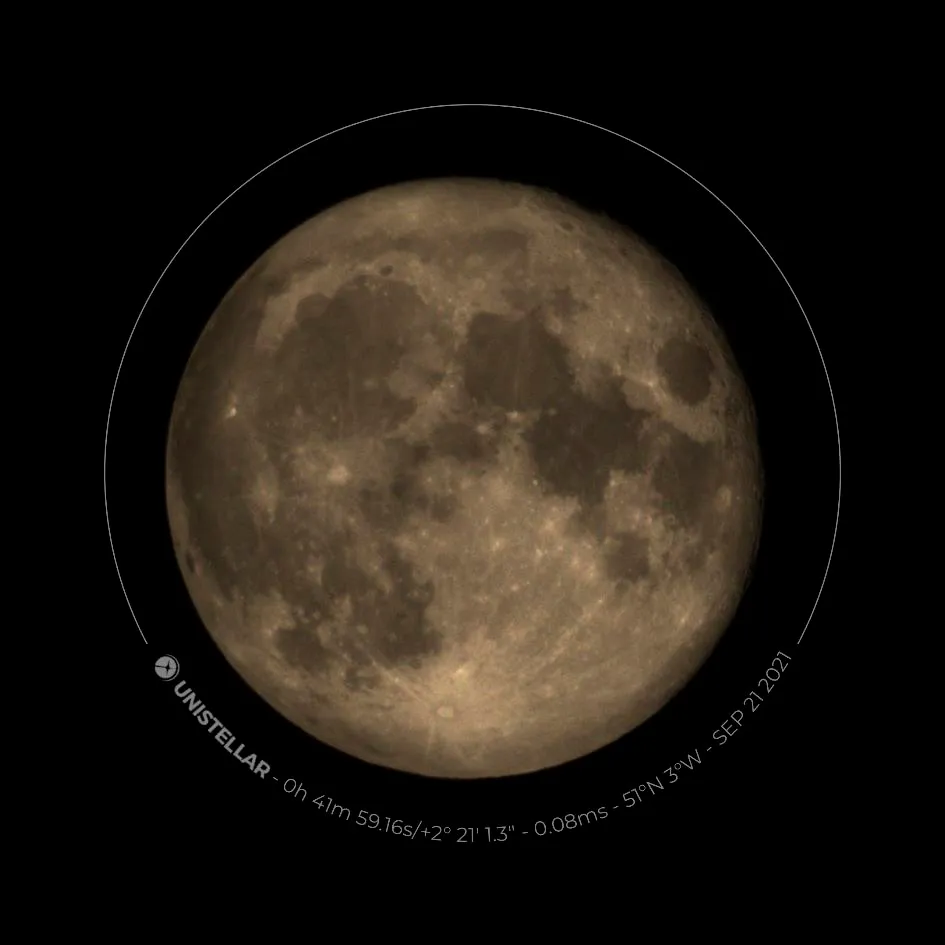
The image settings for each object are automatic, but you can make manual tweaks to the gain, exposure and brightness.
This expensive digital telescope is the ultimate anti-light pollution solution.
It’s not going to replace high-end astrophotography rigs, and it may be on the expensive side for many amateur astronomers, but as a piece of new consumer technology it’s hugely impressive.
It could well be the future answer for urban astronomy.
Upgraded eypiece
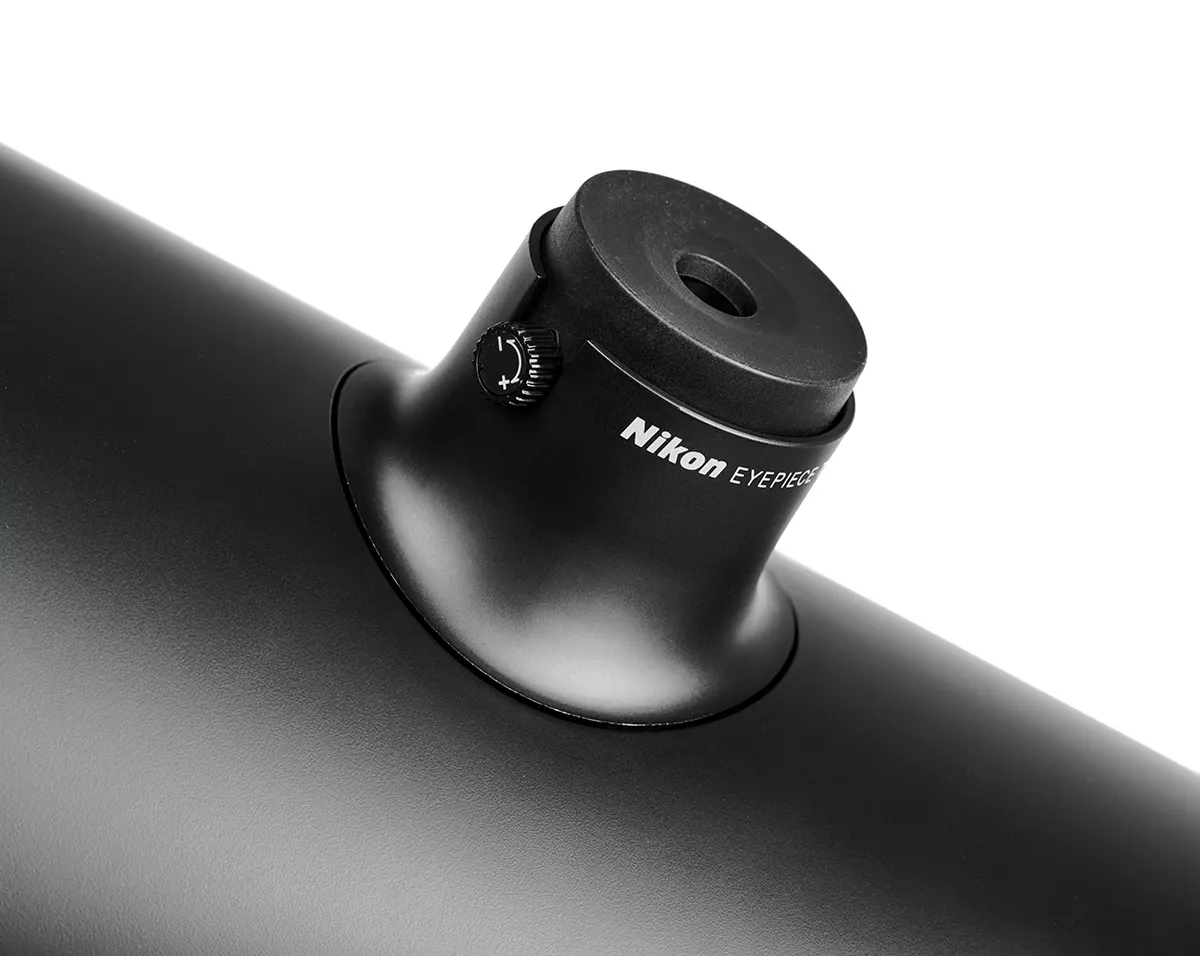
The eVscope 2 features an all-new electronic eyepiece developed by Nikon.
There are three reasons why it’s impressive; the first is that it’s used for focusing the telescope, one of the few tasks that isn’t automated.
To achieve a sharp focus, it’s necessary to use the Bahtinov mask that’s included and to manually tweak the focusing wheel at the bottom of the tube close to the eyepiece.
So, while it’s possible to rely on seeing sharp images via the Unistellar app, it’s much quicker and easier to just put your eye to the eyepiece.
The second reason why the new eyepiece is a step forward is image quality.
Its micro-OLED (Organic Light-Emitting Diode) display has a high-pixel density that shows a sharp image with contrast that manages true black and more vibrant colour.
The eyepiece gives the eVscope 2’s images more depth, making the view more convincing and involving when in use.
Thirdly, there’s more to look at than before through the eVscope 2’s eyepiece, thanks to its wider field of view that can now encompass the whole of the Moon.
eVscope 2: 5 best features
Optics and view
The design incorporates a 114mm (4.5-inch) diameter mirror with a 450mm (17.7-inch) focal length, which gives a focal ratio of f/4. A field of view of 34 arcminutes allows full-screen photography of the Moon, which wasn’t possible with the original eVscope’s field of view of 30 arcminutes.
Enhanced Vision
Light is focused directly onto the new Sony Exmor IMX347 CMOS sensor located inside the spider vane on the front end. In ‘Enhanced Vision’ mode the onboard computer images an object every four seconds and stacks the results as a 7.7MP composite image.
Tripod
Included in the package is a large and sturdy tripod that goes beyond what you might expect to use with a camera. When it is extended, its legs have three sections, with the joins held together by flip-locks. At the top is a hole that the telescope tube slots into, with two small screws securing it in place.
Mount
The L-shaped altazimuth mount contains the motor, which moves the telescope into position and then accurately tracks objects. Inside is a lithium-ion battery (recharged via a USB-C slot on the bottom) and the onboard computer with 64GB storage. A USB-A slot on the side can recharge a smartphone or tablet.
Focusing wheel
To get sharp stars, it’s first necessary to point the eVscope 2 at a starry target. Next, extract the Bahtinov mask from inside the dust cap and click it into place on the front of the tube. It’s then possible to manually adjust the focusing wheel on the bottom of the tube to align the Bahtinov mask’s three starlight spikes.
Vital stats
- Price: £3,399 (plus £59 for shipping)
- Optics: 114mm (4.5-inch) reflector
- Focal length: 450mm, f/4
- Sensor: Sony Exmor IMX347 CMOS
- Mount: Motorised single-arm, altaz, Go-To
- Power: Built-in, lithium-ion rechargeable (12-hr) battery
- Tripod: Aluminium, adjustable height
- Ports: USB-C for power, and USB-A for charging a smartphone
- App control: Unistellar app for smartphones
- Weight: 9kg
- Supplier: Unistellar SAS
- unistellaroptics.com
This review originally appeared in the February 2022 issue of BBC Sky at Night Magazine.
